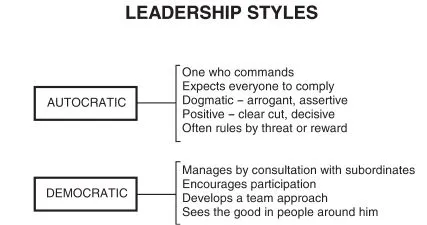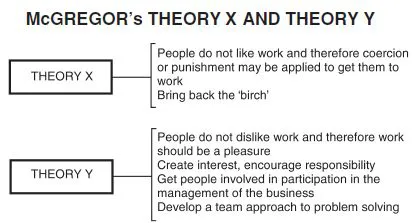![]()
Part A
Planning
![]()
4
Management and organisation
4.1 Management principles
The principles of management established by Henri Fayol in the early twentieth century are as applicable today as they were then. The seven main principles are outlined by many management writers including Brech, Denyer, Drucker, Calvert, Cole and Clutterbuck.
Clutterbuck and Crainer (1990) provide a particularly useful overview of individual contributions to management development in a chronological order from 1841 to date.
The seven principles of management
Fayol developed seven basic principles which are generally applicable to a wide range of business organisations. The seven principles comprise:
- Forecasting and planning
- Organisation
- Commanding or directing
- Controlling
- Coordination
- Motivation
- Communicating, which encompasses them all
Each of these principles is now considered below as applied to the management of a construction organisation.
Forecasting and planning
Forecasting is looking into the future and planning involves the making of decisions on the basis of these forecasts. Types of planning at management level include considerations of strategy (strategic planning), business planning and long- and short-term business planning. Setting business objectives and policymaking form an integral part of forecasting and planning.
Planning first involves consideration of the objectives of the business. A contractor’s objective is to make a profit in relation to the amount of capital invested – no profit, no business. Second, policies must be established in relation to the planned rate of growth and expansion.
Forecasting involves the preparation of:
- Financial forecasts
- company annual turnover
- company cash funding requirements
- individual project cash funding
- Construction workload forecasts and estimating workload
- Resource forecasts
- Staffing and key labour
- Subcontractor resource
Organisation
Organisation is the grouping of work and the allocation of duties, responsibilities and authority.
- Organisation structure of company
- Organisation of individual functions (departments)
- Organisation structure of projects
- Defining roles and responsibilities within the organisation
- Providing job descriptions for individual staff
One of the steps in organising is to divide the business into sections which will be of most help in the efficient administration of the business. These sections may be related to functions, product or location. Many construction firms are organised functionally, that is surveying, buying, administration, planning and construction activities.
Examples of the overall organisation structure of a construction firm and the organisation of a single project are given later in this chapter.
Commanding or directing
Commanding is the giving of instructions to ensure that the agreed policies are carried out. It also involves the granting of authority before commands can be issued.
Control
Control involves the continuous checking of performance with the plan and taking corrective action. The principles of control in relation to the control cycle are outlined in Chapter 15, where control procedures have been applied to a project in relation to contract time (programme), money and cost (resources). Examples of control in construction include:
- Establishing budgetary control procedures within the organisation
- Control of cash flow (the movement of money)
- Control of project cost – monthly cost reporting
- Control of progress
Coordination
Coordination is the unification of effort between the company’s personnel to ensure that the declared policies are fully implemented. Coordination is necessary between personnel in different departments to ensure the smooth running of the business.
Motivation
Motivation theories were developed by McGregor (1960) and Maslow (1954). Maslow’s hygiene factors may be related to a modern contracting organisation by posing the question ‘what motivates management personnel?’ Motivation factors include:
- Pay
- Job security
- Recognition, promotion
- The working environment and working conditions
- Office ‘perks’ such as company car, holidays, use of the company boat or flat
- Balance between work, pleasure and home life
- Creating the ‘no blame’ culture
- Company training culture and quality of training provision
Communicating
Communications are necessary to enable the business to function effectively. This involves the three-way transfer of information between client, contractor and staff.
Modern communication systems ensure that data can be transmitted rapidly by e-mail and fax, and electronic tendering procedures ensure that less paperwork is transferred between client and contractor at the bid stage of a project (Cartlidge (2002) explains how e-tendering works).
The office notice board is a useful means of communicating company policy statements, contract awards and staff promotions and appointments, and a company newsletter may help to boost morale and highlight regional activities and achievements.
4.2 Leadership styles
The Association for Project Management Body of Knowledge (2006) defines ‘leadership’ as the ability to empower and inspire people to achieve project success, whereas Partington (2003) maintains that leadership comes from the involvement, participation and empowerment of followers. As businesses expand, the leadership style of the principal or managing director becomes apparent. The various leadership styles are summarised in Figure 4.1 as being autocratic or democratic.
Traditionally leadership has tended to be associated with autocratic command, especially within the small-sized organisation. Many still see leadership mainly in terms of issuing orders which are obeyed by subordinates without question. Drucker (1989) asserts that leadership is the lifting of man’s vision to higher sights and the raising of man’s performance to a higher standard. Management can only create the leadership under which potential leadership qualities become effective.
Figure 4.1
Clutterbuck and Goldsmith (1984) indicate that to be effective ‘leaders must be seen’. Perhaps the question should be posed: ‘how many times in the last 12 months have you had personal contact with your company chairman or chief executive?’ Perhaps not at all?
Dixon (1991) defines leadership as the process of directing and influencing the work of team members. Leadership is concerned with guiding and directing others. The style adopted depends in part on the manager’s view of human nature in general and the ability of his/her subordinates in particular. The manager’s attitude to his subordinates may be depicted by McGregor’s Theory X and Theory Y, as outlined in Figure 4.2. The Theory X manager favours the autocratic approach while the Theory Y manager favours democracy.
Figure 4.2
4.3 Project teams
It is commonly accepted that construction is a project-based industry requiring multi-disciplined teams of people to work together. Teams of architects, surveyors and engineers frequently represent the client and conversely teams of managers, engineers and subcontractors carry out the work on site. Nowadays client and contractor teams work collaboratively together due to more enlightened approaches to procurement and project management.
Burke (2003) makes the point that ‘teamwork’ should aim to bring individuals together so as to increase their effectiveness without the loss of their individuality. This must be achieved without stifling creativity or the generation of ideas however. This fits with the definition offered by the Association for Project Management (APM) Body of Knowledge that ‘teamwork’ is when people work collaboratively towards a common goal.
Burke emphasises that a team implies a number of people working together to achieve results while a group of people does not. He also explains that a group of people may be working on the same project but that they do not necessarily interact with each other. Dysfunctional teams, where there may be clashes of personality or unreliable subcontractors, contribute to unsuccessful projects. Winch (2002) points out that a team adds value to the group because it is a team.
In construction, the numbers of people working together on a project can be considerable and the numbers on site may vary between 20 and 200 people consisting of managers, engineers, surveyors, operatives and subcontractors etc. This does not square easily with the research findings referred to by Burke, Winch and others that the ideal team size is between 5 and 10 people. Burke further explains, however, that teams tend to grow in size until some magic number is reached – then they subdivide.
This is certainly the case on many projects where, for instance, there may be several subcontractors working on site. Even on a medium-sized project there may be 20 or 30 subcontractors involved and in such cases it is common for the project team to include a subcontract coordinator. It is this person who works with the subcontractors’ representatives and then reports back to the project team thereby subdividing an otherwise large group.
4.4 Team building
Winch argues that unless the team building takes place in the context of a partnering-type arrangement, there is a danger that all that will result is a pseudo team which performs less well – more akin to a representative group than a team.
Lavender (1996) also makes a valid point that team building is difficult because individual members may not be involved in the project all the time. This is true in construction where it is commonly the case that there will be a visiting quantity surveyor or engineer and the health and safety advisor, whilst integral to the team, will almost certainly be head office based and only visit the site infrequently. The same could be said of subcontractors who come and go as the project evolves.
Construction project teams are at best temporary – they break up when the project is finished – and more often than not are transitory. There may be a small ‘core team’ leading the project but the other members come and go as the project develops – some may come back again later whilst others move on to the next job. Even members of the ‘core team’ may change as the site engineer is no longer required or the general foreman is replaced by a finishing foreman etc.
Teams are nevertheless important because they serve as a means of building self-esteem and a sense of belonging among team members but, conversely, some people are happier working on their own. This is quite understandable and it is perfectly acceptable for a project to benefit from ideas generated outside the team as well as within it. Part of the role of the project manager is to work with all sorts of talented individuals and to get the best out of them for the benefit of the project as a whole.
Winch (2002) reminds us that many team-building programmes or events involve the participants in getting cold, wet and muddy. Perhaps this is why so many project teams in construction are successful!
4.5 The size of construction firms
‘Modernising Construction’ (National Audit Office 2001) reported that there are over 160 000 firms operating in the construction industry and many of these are small contractors. In order to give a scale to the industry ‘pyramid’, the current annual turnover of the top 100 contractors in terms of annual turnover is shown in Table 4.1.
Table 4.1 represents less than 1% of the firms in the industry and indicates that the vast majority are either medium-sized or small.
Table 4.1 Top 100 contractors and housebuilders.
Source: Building
|
| Less than 100 | 0 |
| 100–249 | 37 |
| 250–499 | 26 |
| 500–999 | 20 |
| 1000–1999 | 10 |
| 2000–2999 | 1 |
| 3000–3999 | 4 |
| 4000–4999 | 0 |
| 5000+ | 2 |
4.6 The characteristics of firms
It is interesting to compare the changes in the organisational structure of companies as company expansion or change takes place. In many construction situations, the management is not able to cope with the management of changing size.
Drucker (1989) states that the biggest problem in business is growth, that is the problem of changing from one size to another. Many principals or owners of construction firms face this problem as business expansion takes place. Often they cannot cope wi...


